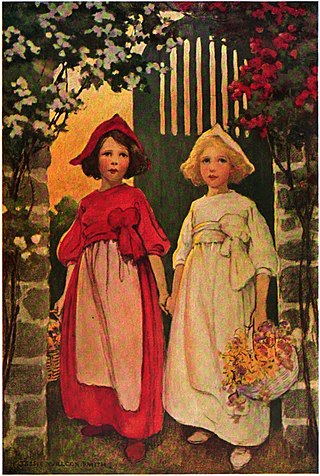
"Snow-White and Rose-Red" is a German fairy tale. The best-known version is the one collected by the Brothers Grimm in 1837 in the third edition of their collection Grimm's Fairy Tales. It was first published by Wilhelm Grimm in 1827 in Wilhelm Hauff's Märchen-Almanach. An older, somewhat shorter version, "The Ungrateful Dwarf", was written by Caroline Stahl (1776–1837). Indeed, that appears to be the oldest variant; no previous oral version is known, although several have been collected since its publication in 1818. Oral versions are very limited regionally. The tale is of Aarne-Thompson type 426.
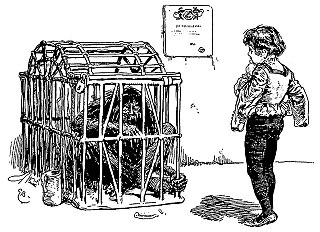
"Iron John" is a German fairy tale found in the collections of the Brothers Grimm, tale number 136, about an iron-skinned wild man and a prince. The original German title is Eisenhans, a compound of Eisen "iron" and Hans. It represents Aarne–Thompson type 502, "The wild man as a helper".
The Aarne–Thompson–Uther Index is a catalogue of folktale types used in folklore studies. The ATU Index is the product of a series of revisions and expansions by an international group of scholars: originally composed in German by Finnish folklorist Antti Aarne (1910), the index was translated into English, revised, and expanded by American folklorist Stith Thompson, and later further revised and expanded by German folklorist Hans-Jörg Uther (2004). The ATU Index, along with Thompson's Motif-Index of Folk-Literature (1932)—with which it is used in tandem—is an essential tool for folklorists.

"Brother and Sister" is a European fairy tale which was, among others, written down by the Brothers Grimm. It is a tale of Aarne–Thompson Type 450. In Russia the story was more commonly known as "Sister Alionushka, Brother Ivanushka", and collected by Alexander Afanasyev in his Narodnye russkie skazki.
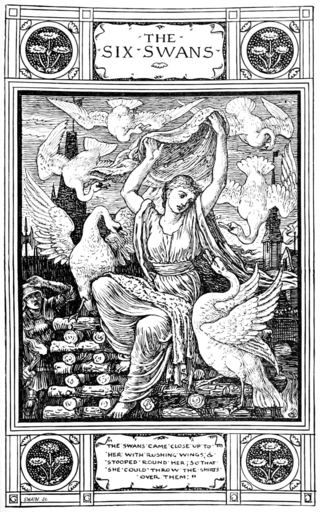
"The Six Swans" is a German fairy tale collected by the Brothers Grimm in Grimm's Fairy Tales in 1812. It is of Aarne–Thompson type 451, commonly found throughout Europe. Other tales of this type include The Seven Ravens, The Twelve Wild Ducks, Udea and her Seven Brothers, The Wild Swans, and The Twelve Brothers. Andrew Lang included a variant of the tale in The Yellow Fairy Book.

"The Master Thief" is a Norwegian fairy tale collected by Peter Chr. Asbjørnsen and Jørgen Moe. The Brothers Grimm included a shorter variant as tale 192 in their fairy tales. Andrew Lang included it in The Red Fairy Book. George Webbe Dasent included a translation of the tale in Popular Tales From the Norse.
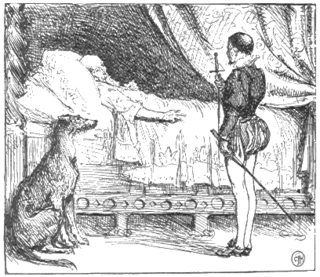
"Trusty John", "Faithful John", "Faithful Johannes", or "John the True" is a German fairy tale collected by the Brothers Grimm and published in Grimm's Fairy Tales in 1819. Andrew Lang included it in The Blue Fairy Book.

"The Water of Life" is a German fairy tale collected by the Brothers Grimm, tale number 97.
Biancabella and the Snake is an Italian literary fairy tale written by Giovanni Francesco Straparola in The Facetious Nights of Straparola.
The Sleeping Prince is a Greek fairy tale collected by Georgios A. Megas in Folktales of Greece.

"The Peasant's Wise Daughter", "The Peasant's Clever Daughter" or "The Clever Lass" is a German fairy tale collected by the Brothers Grimm in Grimm's Fairy Tales as tale number 94. It has also spread into Bohemia and Božena Němcová included it into her collection of Czech national folk tales in 1846.
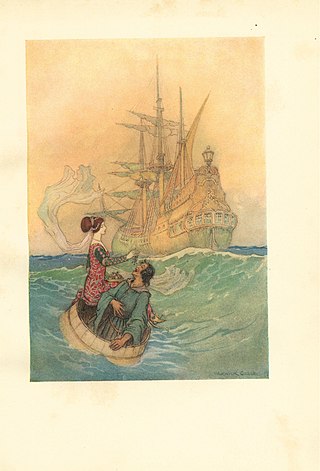
Peruonto is an Italian literary fairy tale written by Giambattista Basile in his 1634 work, the Pentamerone.
The Spinning-Woman by the Spring or The Kind and the Unkind Girls is a widespread, traditional folk tale, known throughout Europe and in certain regions of Asia, including Indonesia. The tale is cataloged as AT 480 in the international Folktale catalog.

"Puss in Boots" is a European fairy tale about an anthropomorphic cat who uses trickery and deceit to gain power, wealth, and the hand in marriage of a princess for his penniless and low-born master.
The Calumniated Wife is a motif in traditional narratives, numbered K2110.1 in Stith Thompson's Motif-Index of Folk-Literature. It entails a wife being falsely accused of, and often punished for, some crime or sin. This motif is at the centre of a number of traditional plots, being associated with tale-types 705–712 in the Aarne–Thompson–Uther Index of tale-types.

The Ebony Horse, The Enchanted Horse or The Magic Horse is a folk tale featured in the Arabian Nights. It features a flying mechanical horse, controlled using keys, that could fly into outer space and towards the Sun. The ebony horse can fly the distance of one year in a single day, and is used as a vehicle by the Prince of Persia, Qamar al-Aqmar, in his adventures across Persia, Arabia and Byzantium.

Strong Hans is a German fairy tale collected by the Brothers Grimm and published in their collection as number KHM 166.
In folkloristics, "The Animal as Bridegroom" refers to a group of folk and fairy tales about a human woman marrying or being betrothed to an animal. The animal is revealed to be a human prince in disguise or under a curse. Most of these tales are grouped in the international system of Aarne-Thompson-Uther Index under type ATU 425, "The Search for the Lost Husband". Some subtypes exist in the international classification as independent stories, but they sometimes don't adhere to a fixed typing.
Sun, Moon and Morning Star is a Greek folktale collected and published in 1864 by Austrian consul Johann Georg von Hahn. It is related to the folkloric motif of the Calumniated Wife and classified in the international Aarne-Thompson-Uther Index as type ATU 707, "The Three Golden Children".
The Three Golden Children refers to a series of folktales related to the motif of the calumniated wife, numbered K2110.1 in the Motif-Index of Folk-Literature. The name refers to a cycle of tales wherein a woman gives birth to children of wondrous aspect, but her children are taken from her by jealous relatives or by her mother-in-law, and her husband punishes her in some harsh way. Only years later, the family is reunited and the jealous relatives are punished. According to folklorist Stith Thompson, the tale is "one of the eight or ten best known plots in the world".











